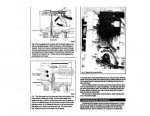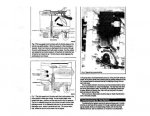I'm looking for any info on the jets for this motor. Carb # 581061 WE 4-1 top carb, middle and bottom carbs are # 582061 WE 4-2. Is there a difference in the carbs? I live 1 mile above sea level and just want to be sure which jets should be in it and where I might purchase them if needed. I'm also trying to find info on float drop so I can check as well. I have a manual coming later this week but sometimes they dont cover all that,
The problem I'm having is after the motor is warm and shut down, say to load a skier, it wont start again unless its choked. Then it just reaks of fuel and loads up and takes a few minutes to clears out so it wont stall upon adding throttle. When it's cold or has cooled down sufficiently it runs great, until you shut it down again. I will be going out and doing a lync sync and check timming here in the next day or two when the weather clears, then I want to turn my attention to the carbs. I will first try to set each carb starting from factory settings, 1 full turn out from closed. I know these motors are getting extremely hard to find parts for so I'm trying to stock up on parts now as well. Going to change water pump propeller and seals next.
Any help would be appreciated,
Thanks
The problem I'm having is after the motor is warm and shut down, say to load a skier, it wont start again unless its choked. Then it just reaks of fuel and loads up and takes a few minutes to clears out so it wont stall upon adding throttle. When it's cold or has cooled down sufficiently it runs great, until you shut it down again. I will be going out and doing a lync sync and check timming here in the next day or two when the weather clears, then I want to turn my attention to the carbs. I will first try to set each carb starting from factory settings, 1 full turn out from closed. I know these motors are getting extremely hard to find parts for so I'm trying to stock up on parts now as well. Going to change water pump propeller and seals next.
Any help would be appreciated,
Thanks


































